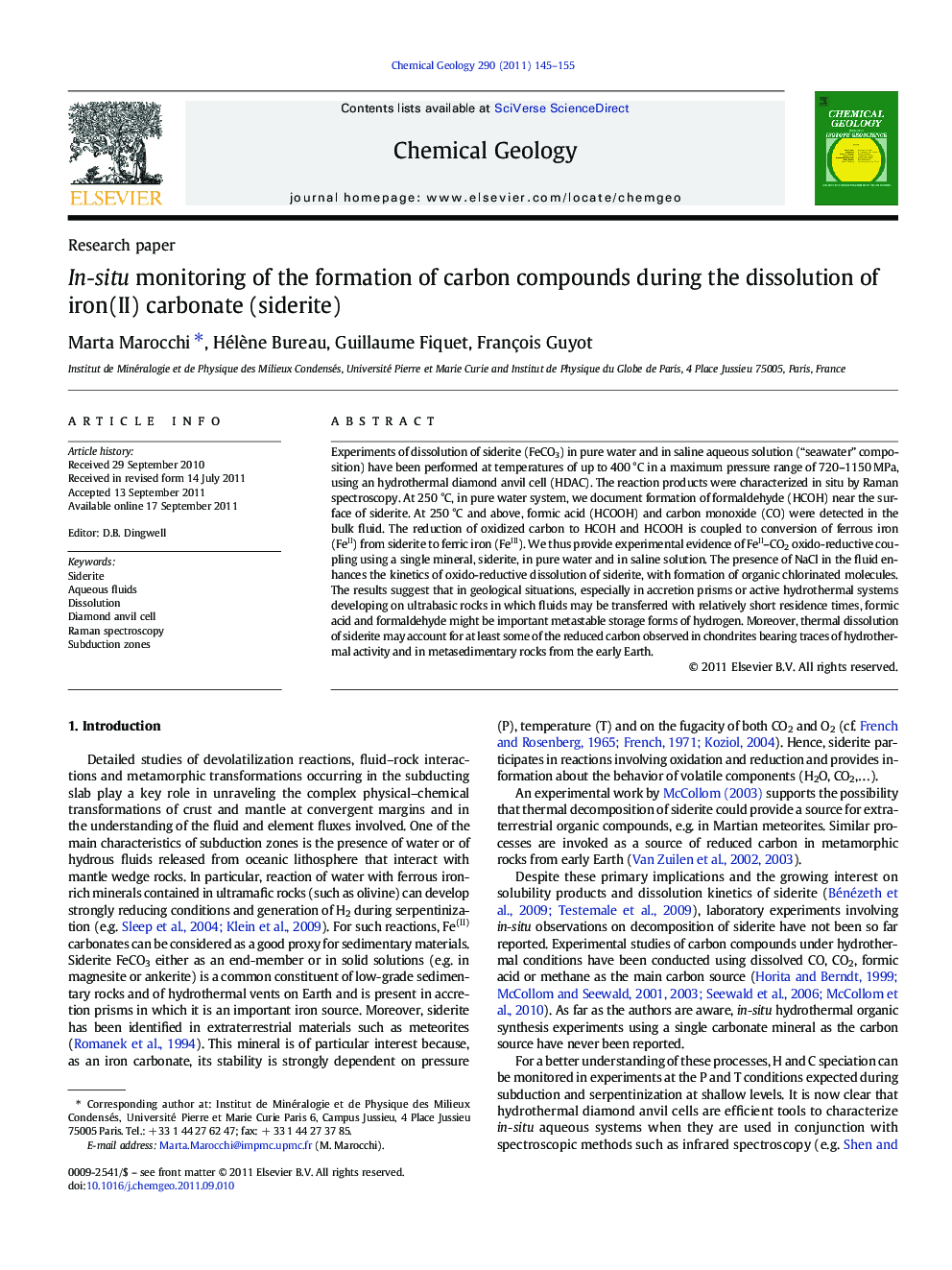| Article ID | Journal | Published Year | Pages | File Type |
|---|---|---|---|---|
| 6437017 | Chemical Geology | 2011 | 11 Pages |
Experiments of dissolution of siderite (FeCO3) in pure water and in saline aqueous solution (“seawater” composition) have been performed at temperatures of up to 400 °C in a maximum pressure range of 720-1150 MPa, using an hydrothermal diamond anvil cell (HDAC). The reaction products were characterized in situ by Raman spectroscopy. At 250 °C, in pure water system, we document formation of formaldehyde (HCOH) near the surface of siderite. At 250 °C and above, formic acid (HCOOH) and carbon monoxide (CO) were detected in the bulk fluid. The reduction of oxidized carbon to HCOH and HCOOH is coupled to conversion of ferrous iron (FeII) from siderite to ferric iron (FeIII). We thus provide experimental evidence of FeII-CO2 oxido-reductive coupling using a single mineral, siderite, in pure water and in saline solution. The presence of NaCl in the fluid enhances the kinetics of oxido-reductive dissolution of siderite, with formation of organic chlorinated molecules. The results suggest that in geological situations, especially in accretion prisms or active hydrothermal systems developing on ultrabasic rocks in which fluids may be transferred with relatively short residence times, formic acid and formaldehyde might be important metastable storage forms of hydrogen. Moreover, thermal dissolution of siderite may account for at least some of the reduced carbon observed in chondrites bearing traces of hydrothermal activity and in metasedimentary rocks from the early Earth.
⺠Raman spectroscopy in hydrothermal diamond-anvil cell allows characterization of COH fluids. ⺠Dissolution of siderite in aqueous solution involves formation of reduced carbon compounds. ⺠Thermal dissolution of siderite can provide reduced carbon in hydrothermal settings. ⺠Formic acid and formaldehyde might be important storage forms of hydrogen in hydrothermal systems.
